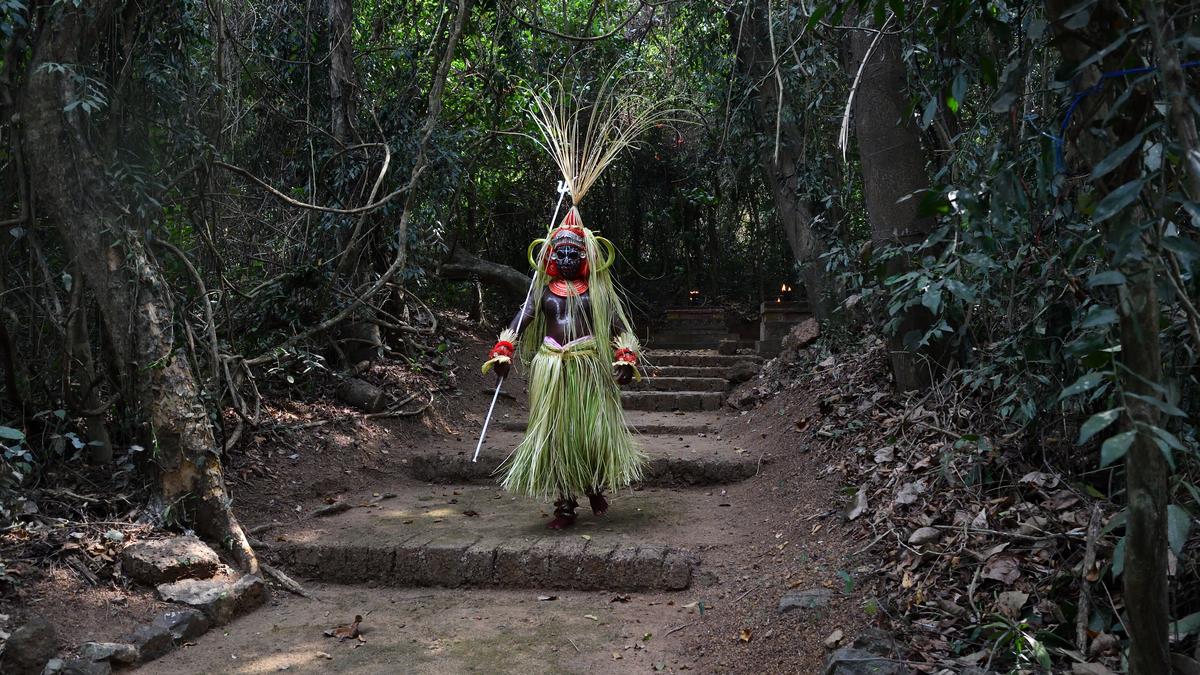Supreme Court Directs Policy for Sacred Groves Protection

- 20 Dec 2024
In News:
Recently, the Supreme Court of India issued a significant judgment directing the Union Government to formulate a comprehensive policy for the protection and management of sacred groves across the country. These natural spaces, traditionally safeguarded by local communities, play a crucial role in preserving both ecological diversity and cultural heritage.
What are Sacred Groves?
Sacred Groves are patches of virgin forests that are protected by local communities due to their religious and cultural significance. They represent remnants of what were once dominant ecosystems and serve as key habitats for flora and fauna. Typically, sacred groves are not just ecological reserves, but also form an integral part of local traditions, often protected due to spiritual beliefs.
Key Features of Sacred Groves:
- Ecological Value: Sacred groves contribute significantly to biodiversity conservation.
- Cultural Significance: These groves are revered in various religious practices and are central to local traditions.
- Geographical Presence: Sacred groves are found in regions like Tamil Nadu, Kerala, Karnataka, Maharashtra, and parts of Rajasthan.
Supreme Court's Directive
The court's judgment was based on a plea highlighting the decline of sacred groves in Rajasthan, particularly those being lost due to deforestation and illegal land-use changes. While the Wildlife (Protection) Act of 1972 empowers state governments to declare community lands as reserves, the court recognized the need for a unified national policy to protect sacred groves as cultural reserves.
Recommendations:
- Nationwide Survey: The Ministry of Environment, Forest, and Climate Change (MoEF&CC) was instructed to conduct a nationwide survey to map and assess sacred groves, identifying their size and extent.
- Legal Protection: Sacred groves should be recognized as community reserves and protected under the Wildlife (Protection) Act, 1972.
- State-Specific Measures: The Rajasthan government was specifically directed to carry out detailed mapping (both on-ground and satellite) of sacred groves within the state, ensuring that the groves are recognized for their ecological and cultural significance.
The Role of Sacred Groves in Conservation
Sacred groves play a pivotal role in the conservation of biodiversity. They serve as refuges for various plant and animal species, and the traditional practices associated with these groves, such as tree worship, discourage destructive activities like logging and hunting.
Ecological and Cultural Importance:
- Sacred groves often act as critical biodiversity hotspots, preserving rare and indigenous species.
- They help maintain clean water ecosystems and act as carbon sinks, contributing to climate mitigation.
- Practices of non-interference with these areas have allowed flora and fauna to thrive over centuries.
Cultural Significance Across India
The importance of sacred groves is deeply embedded in India's diverse cultural heritage. They are considered the abode of deities, and various regions have unique names and rituals associated with these groves.
Examples of Sacred Groves in India:
- Himachal Pradesh: Devban
- Karnataka: Devarakadu
- Kerala: Kavu
- Rajasthan: Oran
- Maharashtra: Devrai
Piplantri Village Model
A key example highlighted in the judgment was the Piplantri village in Rajasthan, where the community undertook a remarkable transformation of barren land into flourishing groves. The initiative, driven by local leadership, involves planting 111 trees for every girl child born, which has led to several environmental and social benefits.
Impact of Piplantri's Community Efforts:
- Over 40 lakh trees have been planted, which has recharged the water table by 800-900 feet and lowered the local climate by 3-4°C.
- The initiative has contributed to the reduction of female foeticide and empowered women's self-help groups.
- The village now enjoys economic growth, better education opportunities, and increased local income.
Legal and Statutory Framework
Sacred groves are already recognized under existing Indian laws, notably the Wildlife (Protection) Act, 1972, which allows states to declare sacred groves as community reserves. Additionally, the National Forest Policy of 1988 encourages the involvement of local communities in the conservation of forest areas, a principle supported by the Godavarman Case of 1996.
Key Legal Provisions:
- Wildlife (Protection) Act, 1972: Empowers state governments to declare sacred groves as community reserves.
- National Forest Policy, 1988: Encourages community involvement in the conservation and protection of forests, including sacred groves.
- Scheduled Tribes and Other Traditional Forest Dwellers (Recognition of Forest Rights) Act, 2006: Suggests empowering traditional communities as custodians of sacred groves.
Looking Ahead: The Need for Action
The Supreme Court has scheduled further hearings to assess the progress of the survey and mapping efforts by Rajasthan. The court also stressed the importance of empowering traditional communities to continue their role as custodians of sacred groves, ensuring their sustainable protection for future generations.
By recognizing the ecological and cultural significance of sacred groves and encouraging community-driven conservation efforts, the Supreme Court’s ruling sets a precedent for more inclusive environmental policies in India. This could also inspire similar initiatives in other parts of the world, promoting the protection of sacred natural spaces for their critical role in maintaining biodiversity and fostering sustainable communities.
